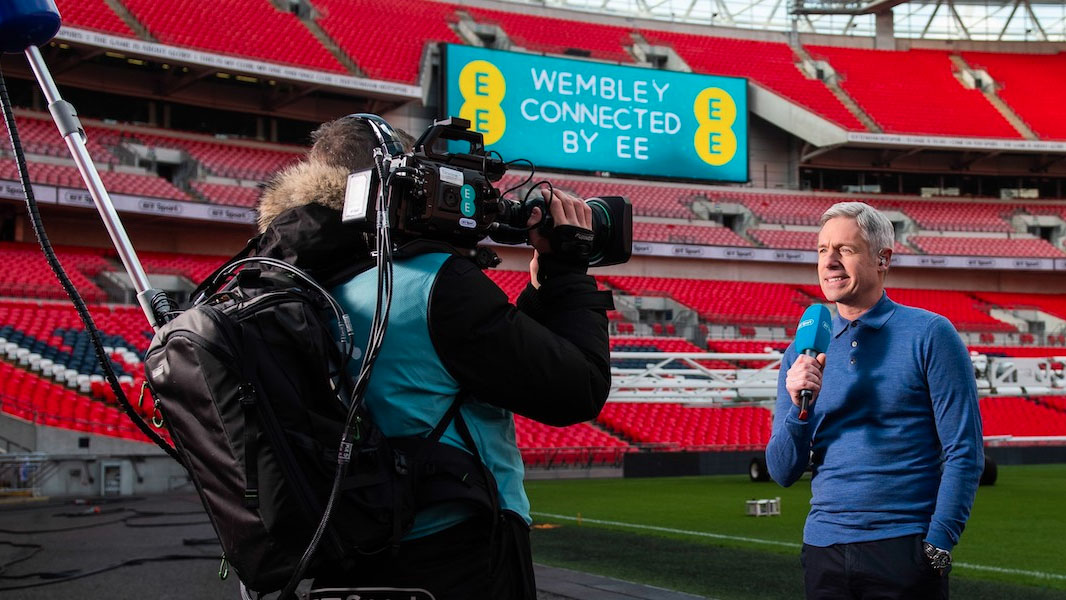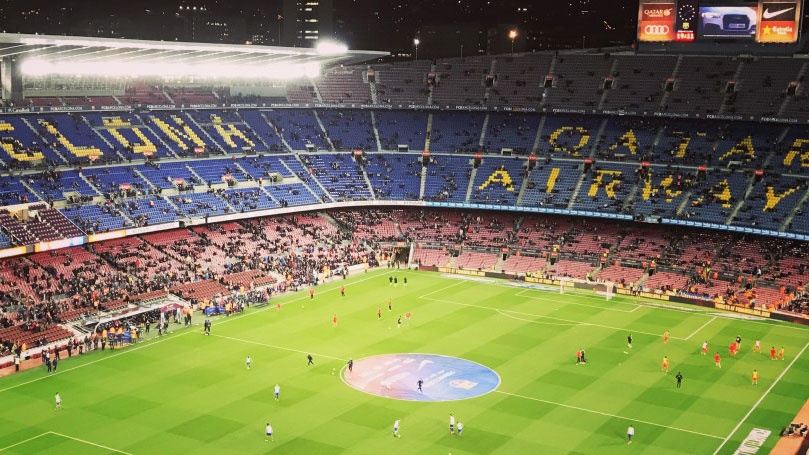Transforming sports for spectators: the 5G effect
Better for fans, better for broadcasters

The goal of every athlete is not just to win, but to continually grow faster and stronger, so that they may keep on winning in the future. But this isn’t just the case in sports. As we speak, every player in the mobile industry is gearing up for their biggest competition yet: the launch of 5G.
5G will, of course, be a lot faster and stronger than the 4G we’re used to – just as it was an improvement on the 3G that came before it. The improvements are pretty mind-boggling; speeds could conceivably be up to 100 times faster than 4G, but this is only one benefit of the new standard.
The other is in terms of latency – the time it takes for your device to communicate with the network.
To demonstrate what this means, the US network Verizon and infrastructure provider Ericsson put together a rather clever demonstration: they gave two American football players VR headsets and mounted cameras on top.
They then sent the video from the cameras over 5G back to the 5G base station, and then from the base station back to the VR headsets – so they would still see what their eyes would naturally, but it would be sent over 5G first.
The result? It turns out that 5G is so quick, it’s possible to throw and catch a football even with images being transmitted to a base station and back, while still maintaining millisecond precision.
Faster connectivity for fans
This clever demo, however, is not the only thing that 5G and sports have in common. In fact, 5G looks set to transform the entire sports viewing experience.
Get daily insight, inspiration and deals in your inbox
Sign up for breaking news, reviews, opinion, top tech deals, and more.
First, let’s look at stadiums and arenas. The most annoying thing that can happen at large events is the mobile networks not working, because thousands of people are all in the same place and are trying to connect to the same mobile antenna.
The good news is that with 5G, this should become a thing of the past as the next-gen mobile network won't just support a denser number of connected devices, but has also been designed to support millimeter wave frequencies, which mean venues will be able to place more, highly directional 5G equipment to ensure everyone can maintain a decent connection.
Having everyone connected in their seats is not just convenient for social media platforms like Facebook as this sort of connectivity could also be used to offer attendees access to action replays from multiple angles – making up for the one thing that TV can do better than being at the game in person.
On a more practical level, 5G could also end the nightmare of queuing for ages at the bar at half time, as ordering drinks and snacks from our seats using our phones could become the norm.
Even more ambitiously, we may not be too far away from 5G-powered augmented reality according to Verizon– we may soon be able to hold up our phones and have the players name and stats float above them as they run around the pitch. The line between FIFA on your Playstation 4 and real life is going to get a little blurry.

Slice that network
Viewing away from the stadium could also improve with 5G. Most obviously, the increased bandwidth and reduced latency should put an end to buffering, even when you’re trying to catch the game while on the bus, but its reliability could go far beyond this thanks to a controversial new technology that’s baked into the 5G standard called network slicing.
At the moment, when you use the internet, all traffic is treated equally – whether you’re sending emails, doing some important work, or rotting your brain watching TikToks.
Network slicing, however, could enable phone networks to pick and choose what gets priority, and syphon off slices of the available bandwidth for particular favored services.
Most obviously this will help the emergency services, but it is surely inevitable that as phone networks compete to win over customers, reliable, slice-off access to live sports will prove and attractive proposition. So we can hopefully expect no buffering whatsoever.
The benefits of 5G and network slicing go beyond the immediate consumer proposition too. In fact, 5G could make it easier for TV networks to film and broadcast games – meaning there could be plenty more sporting content to watch, even if your team is in the lower leagues.
How? As SportsPro reports, BT Sport and EE carried out an intriguing trial, sending a team to film a football match between non-League UK football titans Braintree Town and Bromley FC.
What made it unique wasn’t the diminutive stature of the teams playing, but the fact that all of the pictures were not edited and produced from the stadium as in traditional football broadcasts.
Instead, pictures were sent back over 5G to BT Sports’ headquarters in London, where a production team was able to turn the raw images into a TV show. If the production team can all stay in one place, it means they can produce multiple broadcasts on the same day – or even at the same time.

In other words, 5G could massively reduce the number of people needed to make live sports broadcasts happen – which could, in turn, result in more sport to watch; perfect if you support a smaller sports team.
But there is one last twist: in a world of 5G ubiquity, will people actually want to watch more football, or other traditional sports? The challenge from 5G is that it might make another type of sport more attractive: esports.
Esports have experienced huge growth over recent years thanks to social media and services like Twitch popularizing the players and the clans. According to one estimate, last year 400m people watched esport content – a number that is expected only to continue rising, with stars like Ninja and the “FaZe” clan commanding millions of dollars in sponsorship and advertising revenue just as easily as the biggest footballers do.
With 5G, broadcasting and watching esports is going to be even easier. No longer will there be any constraints on where we can watch from – so don’t be surprised if we start to see players broadcast from their mobile devices, rather than from their bedrooms.
5G Uncovered, in association with Samsung, brings you everything you need to know about the next wave of connectivity - not just how fast it's going to be, but in just how many ways it's going to change your life. Our 5G Uncovered hub is carefully curated to show everything there is to know about the next generation of connection.